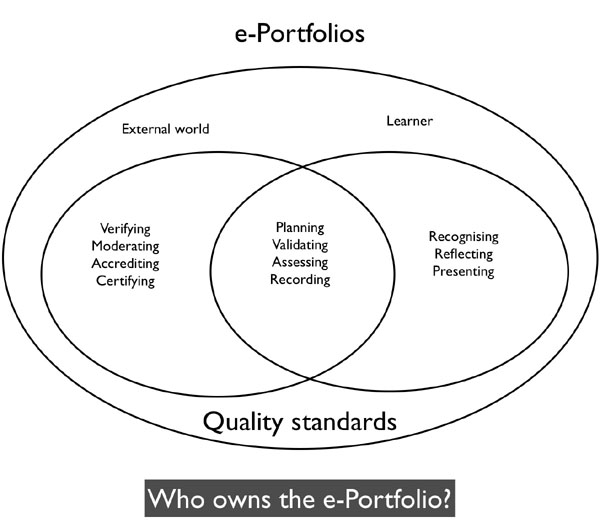The VETNET network goes global: Reflections on the IRN-VET Forum at ECER’14
During the last few years all my blogs have been about the Learning Layers (LL) project – and for good reasons. Our ongoing project has kept us busy to that extent and we have learned a lot. This one, however, will report on our efforts to promote internationalisation of research in Vocational Education and Training (VET) world-wide. For this purpose we had a special event – the IRN-VET Forum – in the context of the European Conference on Educational Research (ECER’14) in the beginning of September in Porto, Portugal.
Already during ECER 2009 ‘regional’ educational research associations like EERA (Europe), AERA (America) and their counterparts had created the World Educational Research Association (WERA) to promote internationalisation and mutual exchanges in educational research. In 2013 the WERA council organised a call for proposals to set up international research networks (IRN) under the auspices of WERA. This gave rise for our initiative “Internationalisation in VET research”.
As we had witnessed for a long while, the European research community in VET research had been able to consolidate itself well under the auspices of the VETNET network of EERA. The annual ECER conferences had become the key platform and the VETNET website was used for sharing papers and presentations. In 2013 major steps were taken forward to set up a journal for the VET research community. In this context some key actors of VETNET came to the conclusion that this journal should not be limited to Europe and that it would be important to set up a global network under WERA.
The proposal for WERA IRN-VET with the overarching theme “Internationalisation in VET research” was submitted and we were happy to have founding members from Europe, Asia, America, Australia and Africa. Very soon we received the notification that the proposal had been accepted and we were free to start with the founding activities. Although it had been relatively easy to get agreements from colleagues from different global regions, it was somewhat difficult to create patterns of cooperation and launch joint activities. Therefore, before having a constituting meeting, we agreed to organise a pilot session within the VETNET program at ECER’14 – the “IRN-VET Forum”.
In the VETNET programme the IRN-VET Forum was placed on the last conference day and as the first morning session (which is normally not the most popular slot). Also, some of the key initiators who had worked with me to prepare the proposal and the session could not attend due to clashes in their calendars. Yet, we were positively surprised to note that the session had over twenty participants who showed genuine interest in the talks on internationalisation.
Here some key points on the session:
- I gave firstly a presentation on the founding steps of the WERA IRN-VET and on the key activities that we had outlined – International VET research review, Thematic sessions in ‘regional’ conferences, creating cooperation between VET teacher education programmes and PhD programmes and support for the new journal IJRVET.
- Martin Mulder gave insights into the two pilot rounds of International VET research review that had organised 2012 and 2013 with his fellow colleagues in Wageningen University. He drew attention to the fact that it was difficult to keep the review process alive as a single-university initiative but that it would be highly interesting to keep it going on as a joint activity of a global network.
- Marg Malloch and Len Cairns from Australia gave insights into the process called ‘destatalisation’ in their country. This concept refers to withdrawal of state in terms of privatisation and/or subventioning of alternative VET provisions at the expense of traditional VET providers (the TAFE colleges). Here the issue is, whether the weakening of state and the state-supported infrastructures is reflected in the quality and attractiveness of VET and what are the consequences in the labour market. The discussion drew attention to parallel developments as ‘deregulation’ in VET (e.g. regarding VET teacher education).
- Lazaro Moreno gave insights into the national PhD programme in VET research that had been launched as a joint initiative of several Swedish initiatives. Here, the issue of internationalisation came into picture via different channels (access to literature, mobility and exchanges as well as internationalisation in one’s own home country).
- Johanna Lasonen (University of South Florida) was the discussant of the session. She encouraged further activities along these lines and drew attention to the need to pay attention to multilingualism, intercultural communication and intercultural integration
In the final part of the session I drew attention to some milestone events and we made some working agreements:
- In the VETNET assembly within the ECER’14 the launch of the new journal IJRVET was announced publicly. The first issue is available online and the next ones are under preparation. This journal serves also the WERA IRN-VET.
- In November the WERA has a focal meeting of the IRNs. By that time we have to finalise the founding regulations and the patterns of work for the IRN-VET. Also, in this context we shall discuss how to go on with the International VET research review.
- In October there will be a regular meeting of the UNESCO UNEVOC-Centres. ITB has received an invitation due to its role in VETNET. This invitation will be taken as an opportunity to inform UNEVOC of the WERA IRN-VET.
- When EERA launches the call for proposals for the ECER’15 in Budapest, we will launch a call for expressions of interest for a WERA IRN-VET Forum and/or for thematic Round Tables.
In this way the pilot event gave us further directions and impulses, how to strengthen our global cooperation.
To be continued …

